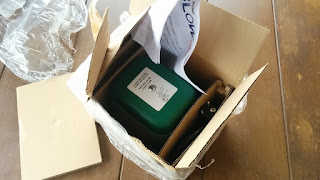It might not be the most glamorous part of building a house, but sewage treatment is a pretty important one. The first house is mostly done and we’ve had a big hole in the ground for the sewage treatment system for a while and now it is time to start installing.
Unfortunately for us, there is no municipal sewage that goes by our land, so we are forced to process the sewage for ourselves. On the other hand, I’ve been rather interested in “off the grid” solutions, so this is just part of the process.
The standard kind of home sewage treatment system appears to be the septic tank. It is a kind of tank that separates the solids from the liquids, and uses anaerobic bacteria to process the sewage and kill of most of the pathogens and break down most of the solids. After this, there is normally a drainage field where the water is effectively filtered through the soil and left in the ground.
The soil on our land is mostly clay, and doesn’t absorb water much at all. This is good for building the pond, since the water won’t leak, but pretty bad for a drainage field.
Another option is an aerobic treatment system (ATS) which is similar to the anaerobic septic tank system, but uses an air pump to pump air through the effluent to speed up the breakdown process. (Interesting note: most of the sites I’ve been to apparently incorrectly call these systems “aerobic septic systems”, but since the “septic” in septic tank refers to the anaerobic process, this isn’t quite right. But still, it seems to be the most common way people refer to these on the net.) These systems produce significantly cleaner water, and with a bit of a disinfecting post process, can safely be used for watering plants on the surface. Most disinfecting processes use chlorine tablets, but there are some newer ones that use normal bleach and disperse it into the water.
So we went with an ATS. Here is a picture of the one we bought:
It is a combined unit with one chamber similar to a septic tank where solids are separated and a second chamber where the effluent is aerated. It uses an external air pump for that:
Additionally, for the kitchen sink, we will add a grease separator since the grease doesn’t break down as well (and I guess can clog various parts of the system):
We are planning on dumping the water coming out of the ATS into a cement reservoir where the chlorination will be done. The chlorine is supposed to evaporate pretty quickly after killing off all the germs, leaving that water in a form that can be pumped out for watering plants.
At least that is the current plan. We are still studying to see what we want to do with the water on the output side. The ATS water is supposed to be cleaner than a normal septic tank, so a mound system might also be possible. These are similar to normal septic drain fields, but are built in mounds on top of the ground to help elevate it away from the high ground water level that we have and can provide a bit of better soil for the drainage field action.
From people we have spoken with, most people in the area are not as environmentally conscious as we are and either dump their raw untreated sewage in the canal, or use a simple septic tank and dump the output of that into the canal. (Neither option complies with environmental laws.) Yet another reason not to fall into a canal in or around Bangkok.
I think we can do a lot better than that. And given my preference, I’d rather just reuse the water on our land as much as possible anyway. We won’t have a “closed system”, but my target is to get pretty close. With more than 1.5m of average annual rainfall, that comes out to about 10,000 cubic meters of water hitting our land per year. Our pond captures about one third of that, and rain gutters on all the roofs capture a bit more, so we certainly get enough water if we could figure out the best ways to store and treat it. (For comparison, in our current house we use about 10 cubic meters of water per month.)
I’ll wait until I learn more about water treatment before I begin thinking about drinking the rainfall, though.


